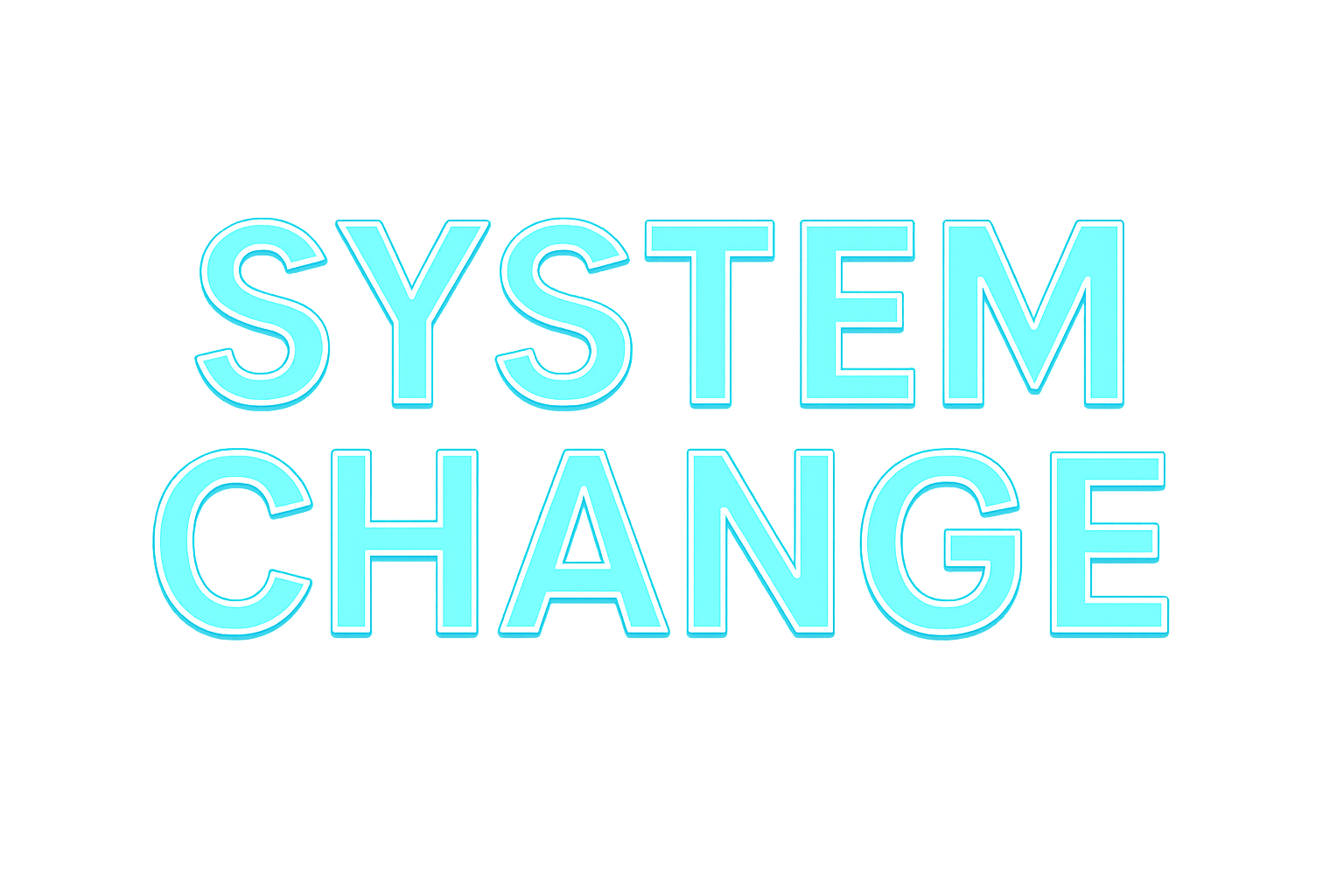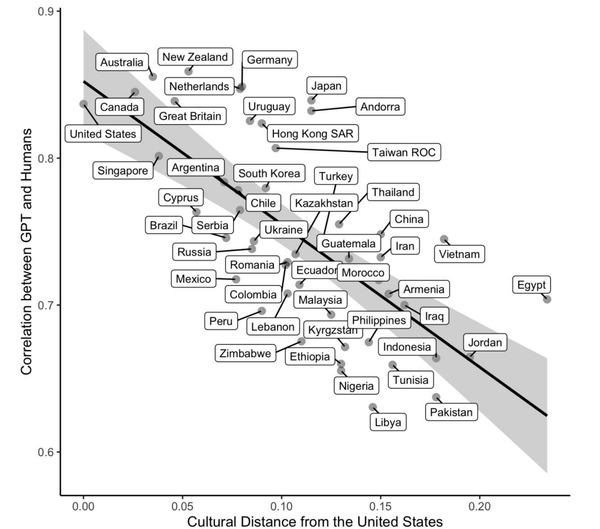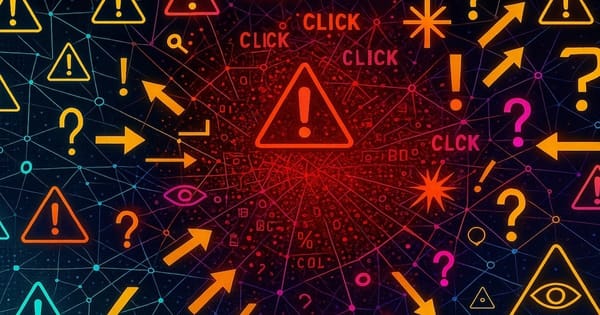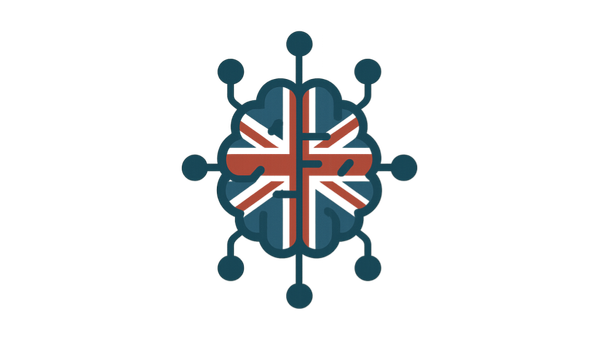A better web shaping up, inevitable hallucations, and how AI is hitting some people hard
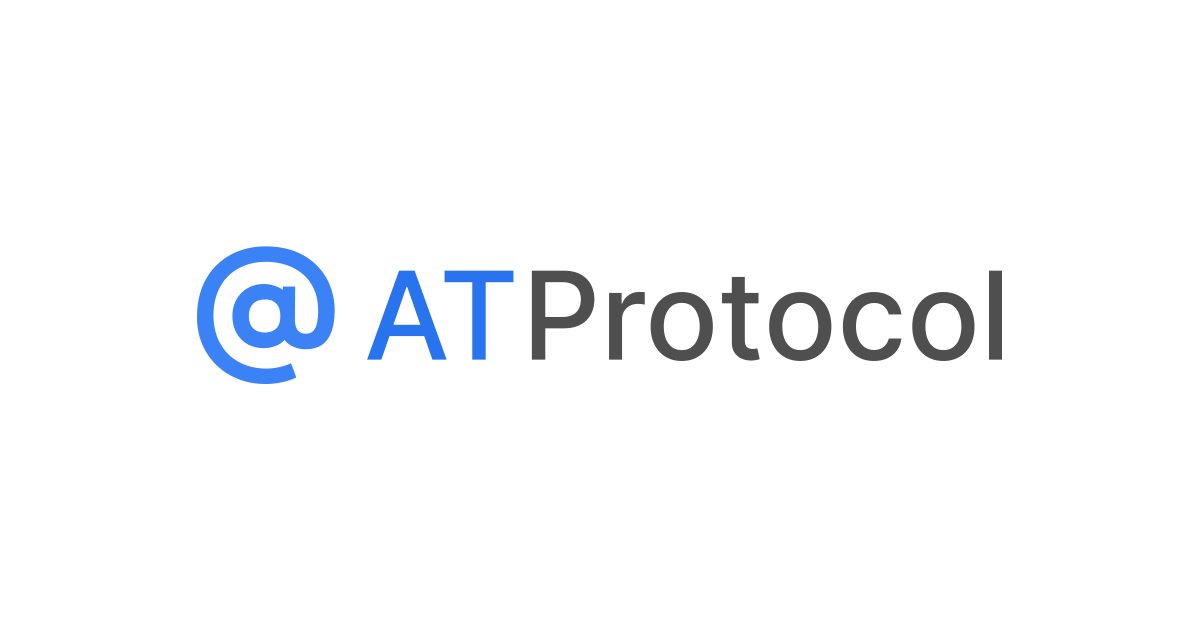
System Change newsletter, 5 October 2025
Welcome back to the System Change newsletter! We start with the AT Protocol. AT who you might ask? I explain why what started as an internal project within Twitter years ago could become the foundation of a much better web and how the last piece of that puzzle is coming into place.
Then we have a quick tour of a few pieces on AI from the last couple of weeks covering the use of ChatGPT, hallucinations and the very real impact it's having on graphics artists. Let’s dive in.
As always, if you enjoy this newsletter, please share it.
The AT Protocol and the Future of the Web
One of the most significant innovations happening online today is the development of the AT Protocol, a new kind of internet architecture designed to restore openness, portability, and user control to our digital lives.
Back in 2019, Jack Dorsey, then Twitter's CEO, created an independent research group to decentralize social media. In the following years, this group came out of Twitter and became an independent company, Bluesky.
Bluesky developed the AT Protocol (ATProto for short), an open source set of rules and standards designed for enabling decentralized web applications. Whilst its first application is the Bluesky microblogging platform, ATProto is, at its core, a general-purpose framework for identity, data hosting, and federation. It allows many independent apps and services to talk to each other, while letting users retain control over their content and identity. Think of it as a modern, more flexible version of what the web should have become: a way for people and apps to interact freely without being locked into a single platform.
If you like complicated diagrams, you'll enjoy this. If not, keep reading 😄
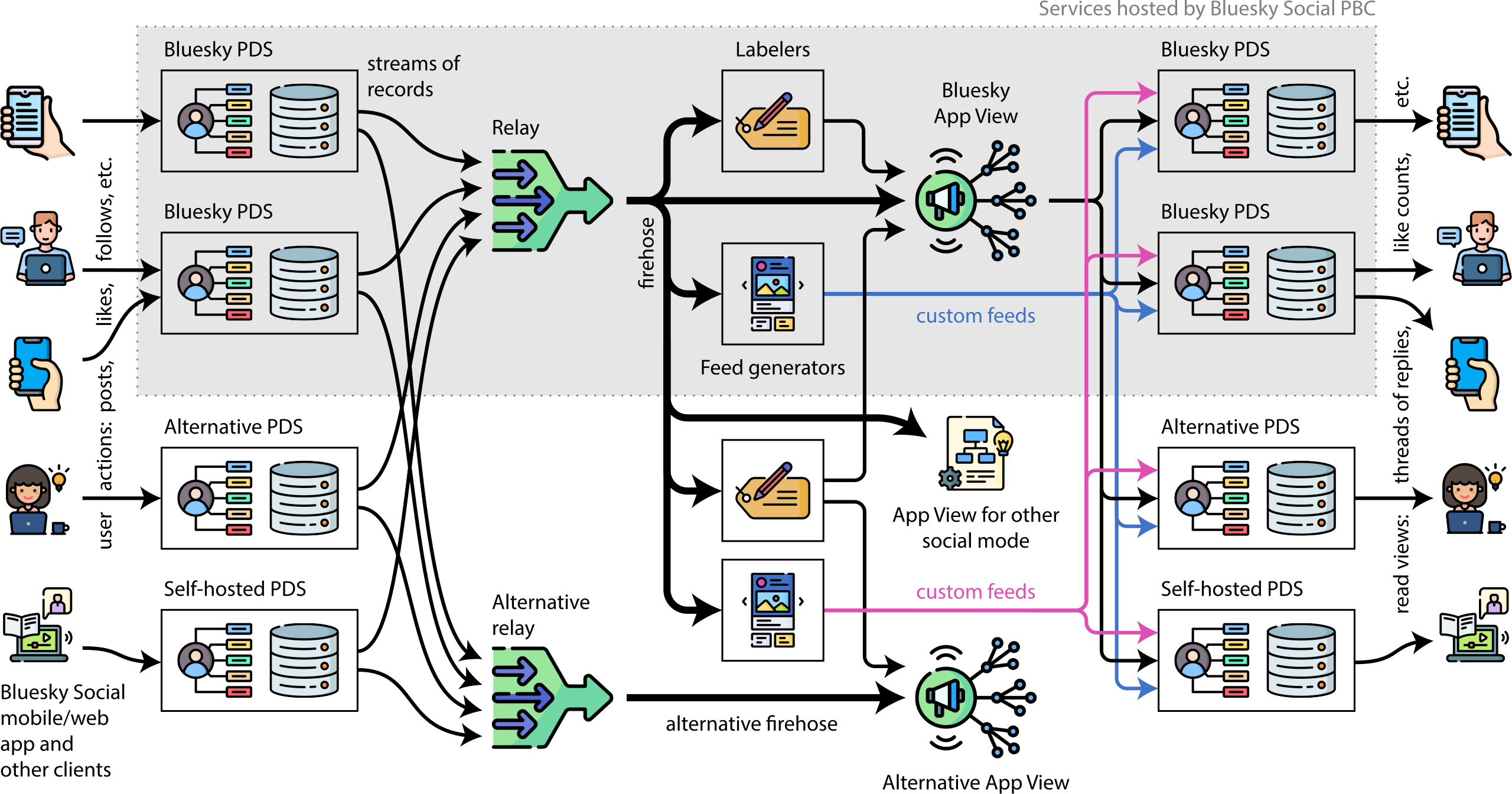
The protocol could support everything from blogging platforms and discussion forums to professional networks, marketplaces, web search, news aggregation and live streaming. For example, a newsletter app built on ATProto could let you follow writers, comment on their posts, and move your subscription history between apps. A conference networking app could seamlessly recognize your existing connections from previous conferences and from social media who are also attending. A review website could help you see how people you trust rate different products and services.
The key is that identity, data, and moderation logic are all modular and interoperable. This opens up possibilities for new platforms where users have full control of their connections and data so you're never again locked into a platform.
That’s where the PLC Directory comes in. PLC stands for Portable Linked Credential, and it’s essentially the address book of the AT Protocol. It maps human-readable handles (like @yourname) to secure cryptographic identifiers that define your digital identity. Just like DNS translates web addresses into IP addresses, the PLC Directory ensures that when someone looks up your identity, whether to read a post or send you a message, they’re pointed to the right source. Until now, this directory was maintained by Bluesky itself. But in a major step forward, the system is being spun out into an independent organization- a move that echoes how other foundational internet infrastructure (like DNS or SSL certificates) are managed as neutral, public institutions.
Why does that matter? Because if ATProto is going to become a shared layer of the internet, powering apps across sectors and use cases, it can’t be controlled by any one company. The last piece of ATProto that is still controlled by Bluesky is the PLC, and handing stewardship of the PLC Directory to an independent entity builds trust, resilience, and long-term viability.
The PLC creates a way to own your identity online, carry it with you across services, and build reputation or relationships that aren’t locked into one commercial provider. In time, your PLC handle could serve as a universal digital passport, used not just for social media, but to sign documents, manage your professional profile, or link your public contributions across research, code, art, or governance. It’s a small, technical piece with wide-reaching implications and it’s laying the groundwork for a freer, more interoperable internet.
Disclosure: I am part of the team behind Eurosky, a public interest non-profit initiative to build independent infrastructure for the social web in Europe - on ATProto.
Now for the round-up:
1. How People Actually Use ChatGPT
A new paper from the National Bureau of Economic Research offers one of the clearest pictures yet of ChatGPT’s real-world uptake. By mid-2025, about 10% of the global adult population had used the tool, with a majority of messages, over 70%, being non-work related. Early adopters were more likely male, but that gap has narrowed fast, especially in lower-income countries. The most common work-related uses were writing, fact-finding, and decision support. This paper suggests that generative AI’s value is diffusing well beyond business productivity.
2. OpenAI: Hallucinations Are Here to Stay
OpenAI has acknowledged in a recent paper that hallucinations are not just the result of bad engineering. They’re mathematically inevitable, stemming from the probabilistic architecture of large language models. Even with perfect data, some level of misrepresentation will always occur. This marks a shift from “we’ll fix it” to “we’ll manage it,” and raises profound questions about AI’s use in critical settings like health, law, and education.
3. Artists Are Losing Work, Wages, and Hope
Brian Merchant writes a powerful and deeply personal piece, AI Killed My Job, capturing how AI is reshaping creative work - not in theory, but in lived experience. Brian brings the stories of illustrators, graphic designers, and visual artists, detailing how they are losing income, clients, and a sense of purpose as companies increasingly rely on AI-generated images. It’s not that the output is better; it’s that it’s “good enough”: fast, cheap, and frictionless. For many artists, long-term clients are vanishing without notice, and new opportunities are being replaced by requests to “edit” or “touch up” AI drafts. The shift is not just economic but emotional, as years of skill and artistic voice are pushed to the margins in favour of speed and convenience.
What makes the piece especially urgent is how quietly this displacement is happening. There’s no mass layoff announcement, no collective bargaining, just individuals slowly realising that the pipeline has dried up. Many speak of feeling “ghosted” by the industry they once belonged to. And while some are experimenting with AI as a tool, most express concern that the tech is being used not to empower artists, but to erase them from the process altogether. It’s a raw, unfiltered look at what happens when creative labour is treated as a cost to cut, rather than a craft to nurture.
At times, this is a very difficult piece to read and more than one contributor talked about ending their lives. A difficult but important read, because the changes brought on by AI have real human costs that we need to reckon with.
To finish off on a lighter note, courtesy of Stephen Shaw on Bluesky

